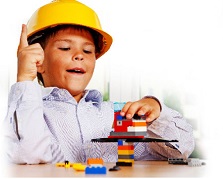Science

Technology

Engineering

Art

- Practicing and gaining fine muscle control & strengthening eye-hand motor coordination: holding paintbrushes & learning how to control paint, crayons, scissors, and other art tools, children gain the skills necessary for later writing activities as well as a feeling of control over themselves.
- Developing perceptual abilities: Colors, shapes, forms, lines, and textures.
- Being given the opportunity to make choices and solve problems: How do you get the legs to stick on a clay figure? What color should I use?
English Language/Arts and Literacy standards such as actively engaging in group reading activities, basic phonetics, alphabet and simple word writing skills for preparing for Kindergarten are fundamental learning blocks our curriculum incorportates on each activity and project we teach.
Math

• Numbers: Children learn about numbers by counting objects and discussing the results: "You gave Chris six goldfish crackers. How many does Susie need?"
• Geometry and spatial relations: Constructing shapes and discussing their properties. They see skinny triangles and fat triangles and upside-down triangles
• Measurement: Children compare the height of a block tower with the height of a desk or table.
• Patterns/geometry: Children become aware of patterns in their clothes. They learn to recognize patterns of different colors and sizes in beads and blocks.
• Analyzing data: Children sort objects by color, size and shape; count them; and record the data on graphs and charts.






